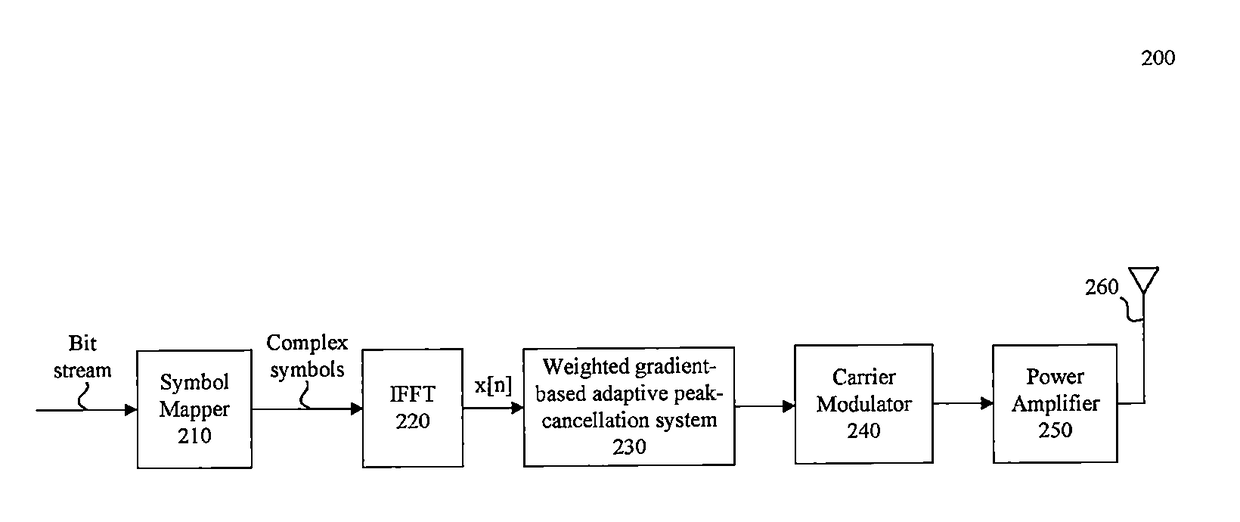System and method for peak-to-average power ratio reduction of OFDM signals via weighted gradient-based adaptive peak cancellation
a technology of adaptive peak cancellation and peak-to-average power ratio, which is applied in the field of system and method for reducing the peak-to-average power ratio of ofdm signals via weighted gradient-based adaptive peak cancellation, can solve the problems of linear and thus lower-efficiency amplifiers to be used, and achieve the effect of reducing the peak-to-average power ratio (papr)
- Summary
- Abstract
- Description
- Claims
- Application Information
AI Technical Summary
Benefits of technology
Problems solved by technology
Method used
Image
Examples
example mathematical
Description
[0062]This section provides a mathematical description of some embodiments. For example, the mathematical description may describe the features of interactive circuitry 310 of FIG. 3 to determine a peak cancellation signal 345, C(j+1).
[0063]For each OFDM symbol an existence of a vector C*, which is:[0064]a weight vector of Reserved OFDM subcarriers or Peak Reduction Tones (PRTs), the solution to the minimization of the clipping noise energy problem:
[0065]ε(C)∥x+FN−1·W·C−clipA(x+FN−1·W·C)∥2 where x is symbols' samples, FN is the N-DFT matrix and W converts the NPRT1x1 vector to NFFTx1 vector giving each of the PRTs a different weight—a Gradient-based Iterative Algorithm is applied:
C(j+1)=C(j)−μ·(∇Cε(C))|c=c(j)
[0066]or after applying IDFT matrix multiplied by W, in the time domain:
c(j+1)=c(j)−μ·FN−1·W·(∇cε(C))|c=c(j)
[0067]For example, for NPRT=14 at locations {29:35, NFFT-(29:35)} W may be defined:
[0068]W=(00000000⋮⋮⋮⋮⋮⋮⋮⋮00000000w2900000000w3000000000⋱00000000w350000⋮⋮⋮⋮...
PUM
 Login to View More
Login to View More Abstract
Description
Claims
Application Information
 Login to View More
Login to View More - R&D
- Intellectual Property
- Life Sciences
- Materials
- Tech Scout
- Unparalleled Data Quality
- Higher Quality Content
- 60% Fewer Hallucinations
Browse by: Latest US Patents, China's latest patents, Technical Efficacy Thesaurus, Application Domain, Technology Topic, Popular Technical Reports.
© 2025 PatSnap. All rights reserved.Legal|Privacy policy|Modern Slavery Act Transparency Statement|Sitemap|About US| Contact US: help@patsnap.com



